Table of Contents
Nestled deep beneath the lush greenery of Cu Chi Tunnels reviews, Vietnam, lies a hidden labyrinth known as the Cu Chi Tunnels. This intricate network of underground passages, bunkers, and living quarters served as a crucial base of operations for the Vietnamese resistance forces during the Vietnam War. Today, these tunnels have been transformed into a popular tourist destination, offering a glimpse into the ingenuity, resilience, and determination of the Vietnamese people.
Overview of Cu Chi Tunnels reviews

The Cu Chi Tunnels reviews are an extensive network of interconnected tunnels stretching over 200 kilometers (124 miles) in length. Excavated by hand using rudimentary tools, these tunnels were constructed over a period of more than 20 years, primarily by Vietnamese women and children. The tunnels served a variety of purposes, including providing shelter, storage, hospitals, meeting rooms, and even kitchens for the Viet Cong fighters.
How were the tunnels built?
The construction of the Cu Chi Tunnels was a remarkable feat of engineering and endurance. The tunnels were dug using simple tools such as shovels, hoes, and bamboo baskets. The soil was then carried away in bags or buckets and dumped in nearby fields or rivers to avoid detection. The tunnels were dug in three levels – the first level at 3-5 meters deep, the second level at 8-10 meters deep, and the third level at 12-15 meters deep. This multi-level design allowed for ventilation and escape routes in case of enemy attacks.
The tunnels were also reinforced with wooden beams and bamboo traps to prevent collapse. In addition, booby traps were strategically placed throughout the tunnels to deter and injure any intruders. These traps included spike pits, trap doors, and tripwires connected to grenades. The Viet Cong fighters were highly skilled in navigating these traps, but for the untrained eye, they were deadly.
History of Cu Chi Tunnels
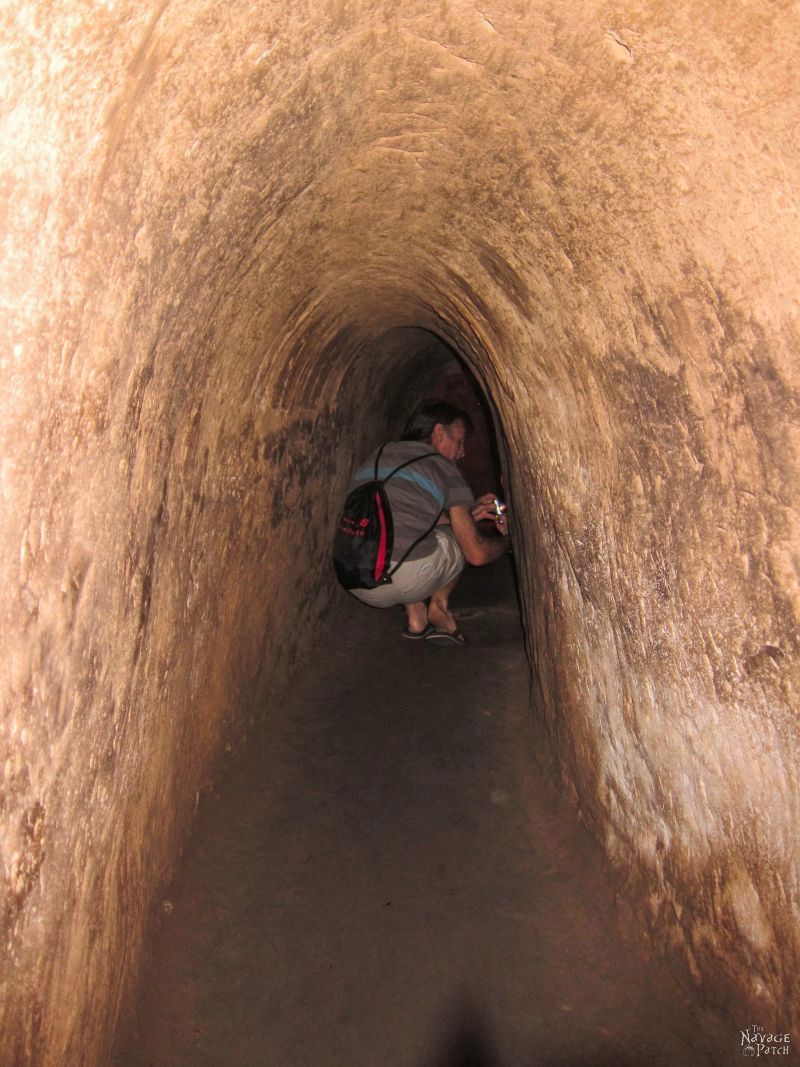
The history of the Cu Chi Tunnels reviews dates back to the early days of the Vietnam War. As the war intensified, the Viet Cong forces found themselves in need of a secure base of operations to launch surprise attacks against the South Vietnamese and American troops. The tunnels provided them with a safe haven, allowing them to evade enemy detection and mount effective resistance against the superior firepower of their opponents.
Role of the Cu Chi Tunnels in the Vietnam War
The Cu Chi Tunnels played a crucial role in the Vietnam War, serving as a strategic stronghold for the Viet Cong forces. They provided shelter, storage, and communication networks for the fighters, allowing them to move undetected and launch surprise attacks on their enemies. The tunnels also served as a means of transportation, with some connecting to nearby villages and others leading to the Ho Chi Minh Trail, a vital supply route for the North Vietnamese Army.
The tunnels were also used as hospitals, with makeshift operating rooms and pharmacies set up to treat injured soldiers. Despite the constant threat of bombing and flooding, the tunnels remained a vital lifeline for the Viet Cong fighters throughout the war.
Visitor Reviews of Cu Chi Tunnels
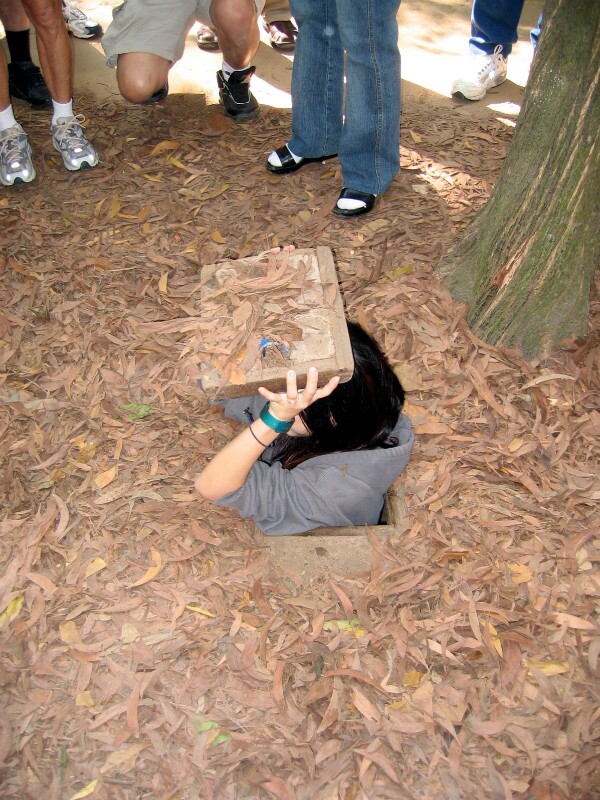
Visitors to the Cu Chi Tunnels reviews are often amazed by the ingenuity and resilience of the Vietnamese people during the war. Here are some reviews from tourists who have explored the tunnels:
- “The Cu Chi Tunnels were an eye-opening experience. It’s hard to imagine how the Viet Cong fighters lived and fought in such cramped conditions. A must-visit for anyone interested in the history of the Vietnam War.” – Sarah, USA
- “I was blown away by the intricate network of tunnels and the stories of the people who lived and fought in them. Our tour guide was very knowledgeable and made the experience even more meaningful.” – John, Australia
- “The Cu Chi Tunnels were an unforgettable experience. It’s incredible to see how the Vietnamese people used their resourcefulness and determination to resist against a much larger and better-equipped enemy.” – Maria, Spain
Top Things to See at Cu Chi Tunnels
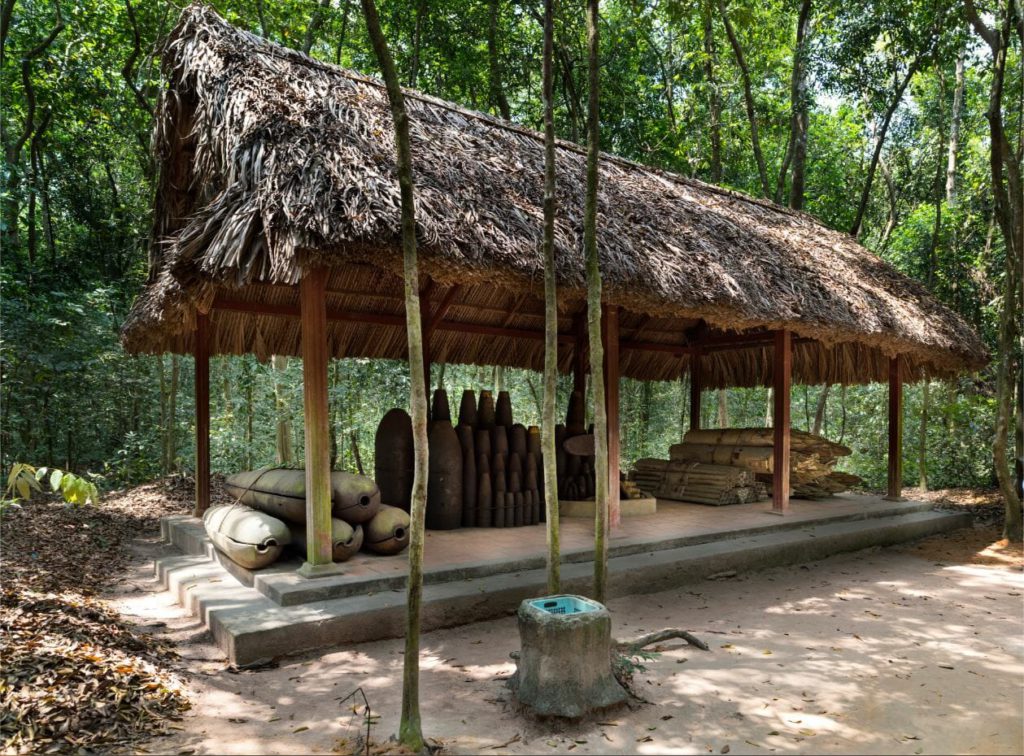
There are several points of interest within the Cu Chi Tunnels that visitors should not miss. Here are some of the top things to see:
Ben Dinh Tunnel Entrance
The Ben Dinh Tunnel Entrance is the main entrance to the Cu Chi Tunnels and is located about 40 kilometers from Ho Chi Minh City. This entrance has been widened for tourists to enter and explore the tunnels. Visitors can also see various types of traps and weapons used by the Viet Cong during the war.
Underground Living Quarters
The tunnels were not just used for fighting and hiding; they were also home to many Vietnamese families during the war. Visitors can see the cramped living conditions and imagine what it must have been like to live underground for months on end.
Secret Escape Routes
One of the most fascinating aspects of the Cu Chi Tunnels is the intricate network of secret escape routes built into the tunnels. These routes were designed to confuse and mislead the enemy in case of an attack. Visitors can crawl through these narrow passages and get a sense of the danger and uncertainty that the Viet Cong fighters faced every day.
Tips for Visiting Cu Chi Tunnels
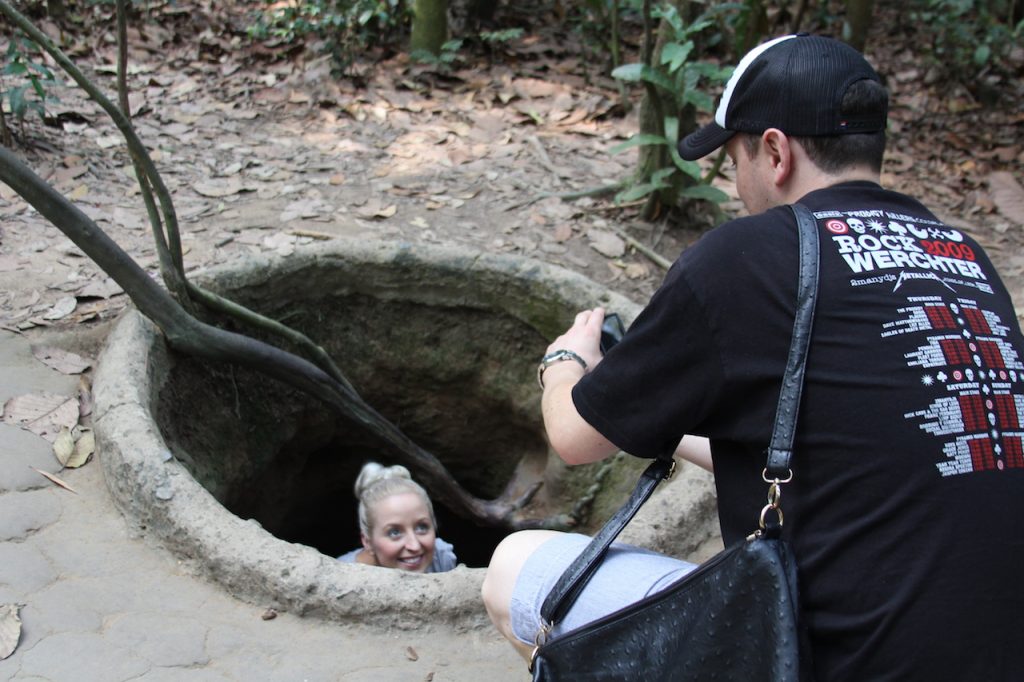
If you’re planning a visit to the Cu Chi Tunnels, here are some tips to help you make the most of your experience:
- Wear comfortable and sturdy shoes as you will be walking and crawling through narrow tunnels.
- Bring insect repellent as there are mosquitoes and other bugs in the area.
- Be prepared for hot and humid weather, so bring plenty of water and sunscreen.
- If you have any claustrophobia or physical limitations, it’s best to avoid the tunnels.
- Consider hiring a guide to get a better understanding of the history and significance of the tunnels.
Cu Chi Tunnels Tour Options
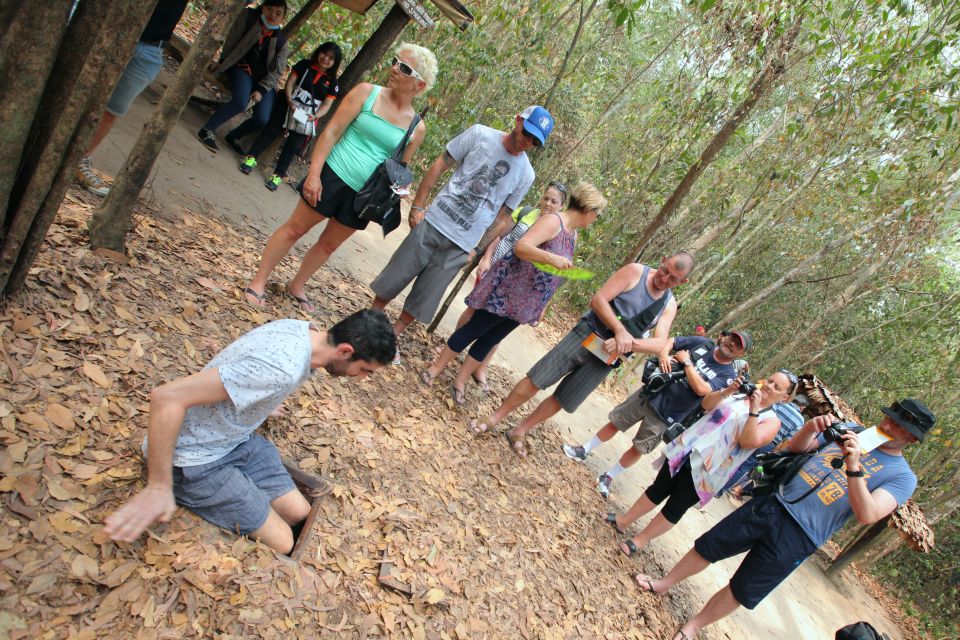
There are several tour options available for visitors to explore the Cu Chi Tunnels. Here are some popular ones:
Half-Day Tour
A half-day tour is perfect for those with limited time but still want to experience the Cu Chi Tunnels. These tours usually include transportation, a guided tour of the tunnels, and a chance to shoot an AK-47 rifle at a nearby shooting range.
Full-Day Tour
A full-day tour allows visitors to spend more time exploring the tunnels and other points of interest in the area. These tours often include a visit to the Cao Dai Temple, a traditional Vietnamese lunch, and a boat ride on the Saigon River.
Private Tour
For a more personalized experience, consider booking a private tour. This option allows you to customize your itinerary and have a dedicated guide for your group.
Frequently Asked Questions about Cu Chi Tunnels
- Are the Cu Chi Tunnels safe to visit?
Yes, the tunnels have been widened and reinforced for tourists to safely explore. However, it’s essential to follow the instructions of your guide and not wander off on your own.
- Can I crawl through the tunnels?
Yes, some sections of the tunnels have been widened for visitors to crawl through. However, if you have any physical limitations or claustrophobia, it’s best to avoid this activity.
- Is there an entrance fee for the Cu Chi Tunnels?
Yes, there is an entrance fee of 110,000 VND (approximately $5 USD) for adults and 55,000 VND (approximately $2.50 USD) for children.
- What is the best way to get to the Cu Chi Tunnels?
The most convenient way to get to the Cu Chi Tunnels is by booking a tour that includes transportation. Alternatively, you can take a public bus or taxi from Ho Chi Minh City.
Insider Tips for Exploring Cu Chi Tunnels
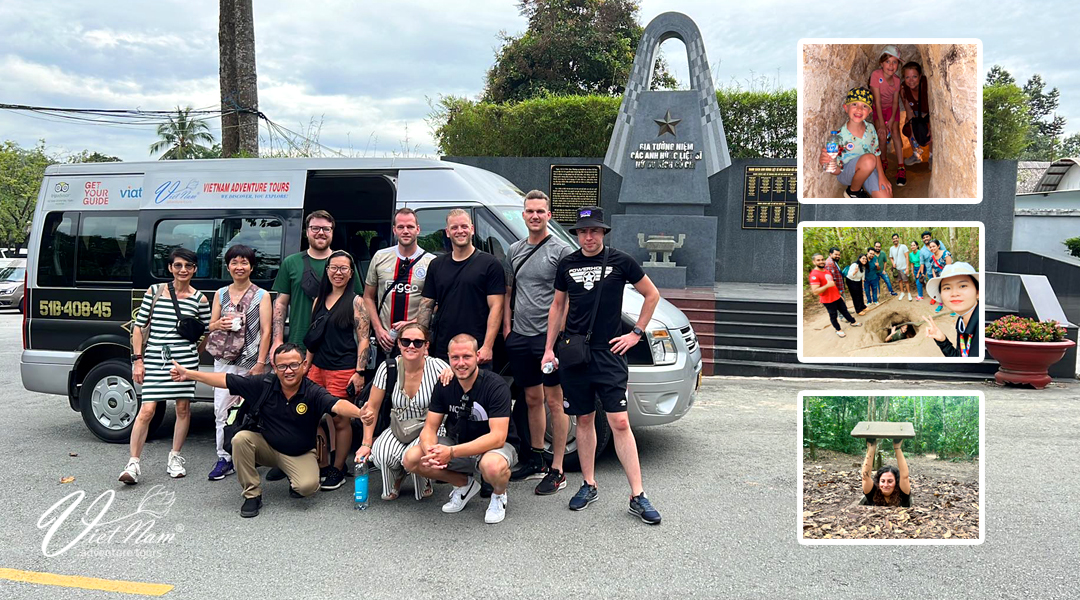
- Arrive early in the morning to avoid crowds and the midday heat.
- Wear light-colored clothing to stay cool and blend in with the surroundings.
- Bring a flashlight or headlamp to navigate through the dark tunnels.
- Don’t forget to bring your camera to capture the experience.
- Try some of the local dishes at the food stalls near the entrance of the tunnels.
Best Time to Visit Cu Chi Tunnels

The best time to visit the Cu Chi Tunnels is during the dry season, from December to April. The weather is more pleasant, and there is less chance of rain, making it easier to explore the tunnels.
Final Thoughts on Cu Chi Tunnels
A visit to the Cu Chi Tunnels is a must for anyone interested in the history of the Vietnam War. It’s a humbling experience to see firsthand the resilience and determination of the Vietnamese people during one of the most challenging times in their history. The tunnels serve as a reminder of the human cost of war and the importance of learning from the past.
Conclusion
In conclusion, the Cu Chi Tunnels reviews are not just a tourist attraction; they are a significant part of Vietnam’s history and a testament to the strength and perseverance of its people. From the construction of the tunnels to their role in the Vietnam War, there is much to learn and appreciate about this remarkable underground network. So, if you’re planning a trip to Vietnam, make sure to add the Cu Chi Tunnels to your itinerary for an unforgettable experience.